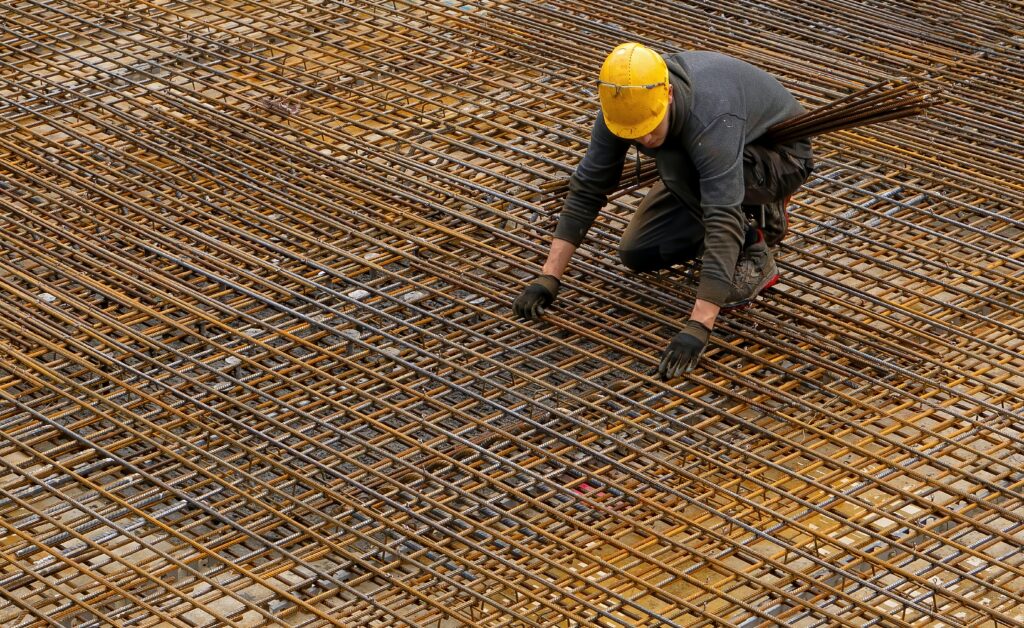Corrosion damage to reinforced concrete structural members such as foundations, columns, retaining walls, or piles poses a significant threat to structural integrity. Galvanized rebar plays a crucial role in ensuring resilient, futureproof infrastructure in terms of effective protection against corrosion.
Even when other measures are used, such as extra concrete cover or reducing concrete permeability, galvanized rebar enhances safety and reliability. “Addressing corrosion during construction minimises maintenance costs and disruptions,” notes Simon Norton, Director, International Zinc Association (IZA) Africa.
The IZA reports that corrosion damage to reinforced concrete structures in the United States costs an estimated $20 billion a year. This figure is expected to grow by $500 million each year as existing infrastructure continues to age. In South Africa, ageing wastewater works, waterworks and rail infrastructure need to be repaired with galvanized rebar.
“Dealing with corrosion post-construction is costly and disruptive as all or part of the structure needs to be closed periodically for maintenance and repair. Failure to properly address corrosion can also lead to catastrophic structural failures with potentially deadly consequences,” highlights Norton.
Many of these costs and safety issues are avoidable if the potential for corrosion is minimised during construction through proper design and material selection. This is especially critical for the reinforcing steel and the structural steel connectors used to strengthen and join concrete sections.
Corrosion can be managed by reducing concrete permeability through optimal water and cement ratios, appropriate compaction and curing conditions, the use of concrete impregnation methods or membrane-type concrete coatings and by providing a good depth of concrete cover over the rebar.
“All of these measures can delay the corrosion of rebar, but not prevent it. The use of galvanized rebar has real benefits in improving the safety and reliability of reinforced concrete, even when the above measures are used,” says Norton.
Galvanized zinc coatings form an impervious metallic zinc barrier around the steel to isolate the steel surface from the surrounding concrete. This barrier is the first line of defence to protect the steel from corrosion.
The excellent corrosion protection offered by zinc coatings or galvanizing derives from both the low natural corrosion rate of zinc, coupled with its ability to extend protection to adjacent exposed steel areas, an effect known as cathodic protection.
The coating also exhibits strong adhesion to the underlying steel surface due to its unique metallurgical bond that, together with the inherent toughness of a metallic coating, provides superior resistance to mechanical damage. The combination of these features results in a very durable coating, enabling concrete structures to be more tolerant of variability in concrete quality and reinforcement placement.
Material specifiers and product engineers in key end-use markets such as building, construction and transportation are increasingly interested in selecting materials that have the best environmental profile while meeting traditional cost, quality and technical performance criteria.
Measuring the impact and resource requirements associated with zinc production against the impact and the benefits of using zinc during other stages in the product lifecycle show zinc as a very sustainable material. The environmental footprint of galvanized coatings has also been well documented, adds Norton.
“Galvanizing can extend the life of steel and concrete structures to 100 years or more, enabling huge conservation of natural resources by reducing the waste inherent with premature end-of-life. Energy savings are also accrued through minimised maintenance and upkeep,” highlights Norton.
The end-of-life recycling of zinc coated steel also adds to this conservation because energy requirements for remelting steel and recovering the zinc are less than those required for producing the original metals. “The zinc and galvanizing industries understand that environmental and sustainability are integral to their future,” concludes Norton.




